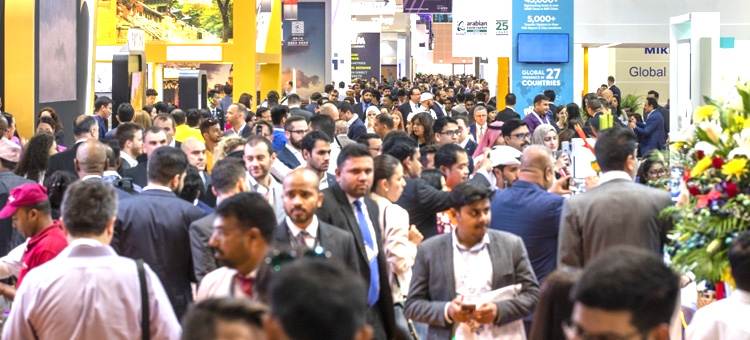Mumbai: The number of Indian visitors travelling to the GCC over the coming five years will create an extra 10.8 million room nights, according to data published ahead of Arabian Travel Market 2019 (ATM), to be held at Dubai World Trade Centre from April 28 to May 1, 2019. The latest research published by Colliers International predicts around nine million Indians will travel to the GCC by 2022 – 37 per cent of India’s total outbound market – with business, place of work and leisure underpinning this demand.
Indian outbound tourists accounted for 22.5 million worldwide tourists in 2018, with reports from the UNWTO estimating this figure will increase by 122 per cent to reach over 50 million by 2022. Adding to this, Indian tourists are among the world’s highest spenders per visit made abroad, with visitor spend expected to increase from US$23 billion in 2018 to US$45 billion by 2022.
Danielle Curtis, Exhibition Director ME, Arabian Travel Market, said, “The Indian outbound market has continued to grow at an average annual growth rate of 10-12 per cent over the last seven years. The GCC has benefitted from this trend with Indian travellers’ willingness and ability to spend on outbound travel supported by the country’s pace-setting 7 per cent GDP growth and a new generation of leisure attractions in the GCC as well as increased business opportunities and relaxed visa regulations for Indian nationals. We are witnessing this growth first hand with Indian visitors to ATM increasing 27 per cent YoY between 2017 and 2018.”
In 2017, the UAE welcomed 2.3 million Indian tourists, accounting for 13 per cent of its total annual visitors, with this figure expected to increase at a Compound Annual Growth Rate (CAGR) of 7 per cent to 2022. Saudi Arabia will also experience a comparative growth of 7 per cent – while the remaining GCC countries, Oman, Kuwait and Bahrain will all witness an increase of 6 per cent between 2018 and 2022. Curtis, said, “The influx of Indian visitors to the GCC shows no sign of abating. Supporting this demand, in the UAE alone, there are currently 1065 weekly flights to India corresponding to 130,000 seats per week. Meanwhile, on-going bilateral talks continue to take place to increase airline frequency between India and all GCC countries.”
“A rapidly growing younger population combined with a burgeoning middle class – currently representing 350 million of India’s total population – who have an increasing amount of disposable income, provide strong indications that the country will continue to see a steep rise in the number of nationals travelling abroad,” Curtis added.
Meanwhile, data shows arrivals from Europe to the GCC will increase 29 per cent over the period 2018 to 2023, driven by new and direct flight routes, a growing number of millennial and middle-class travellers and competitive air fares.
In yet another study, Artificial Intelligence (AI) could increase hotel revenues by over 10 per cent and reduce costs by more than 15 per cent – with hotel operators expecting technology such as voice and facial recognition, virtual reality and biometrics to be mainstream by 2025.
The research estimates 73 per cent of manual activities in the hospitality industry have the technical potential for automation, with many global hotel operators including Marriott, Hilton and Accor already investing in automating elements of their human resources.
ATM 2019 had adopted cutting-edge technology and innovation as its main theme. In the 2018 edition, ATM welcomed over 39,000 people, showcasing the largest exhibition in the history of the show, with hotels comprising 20 per cent of the floor area.





